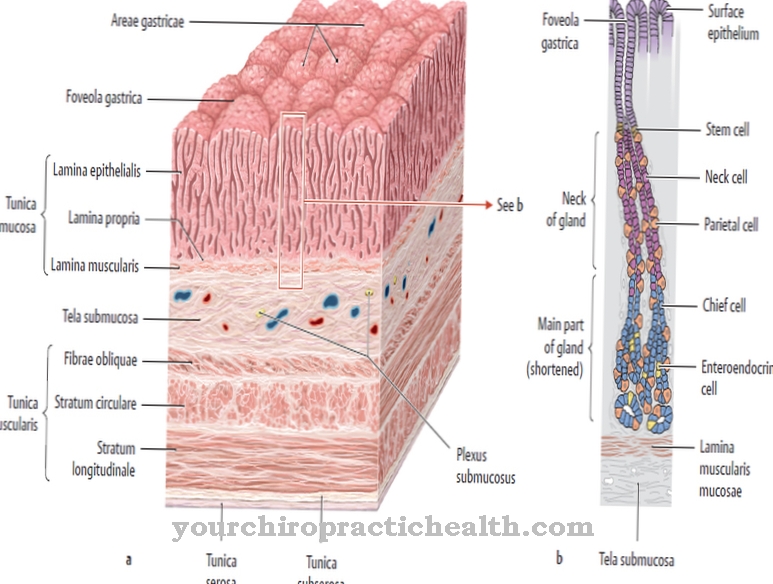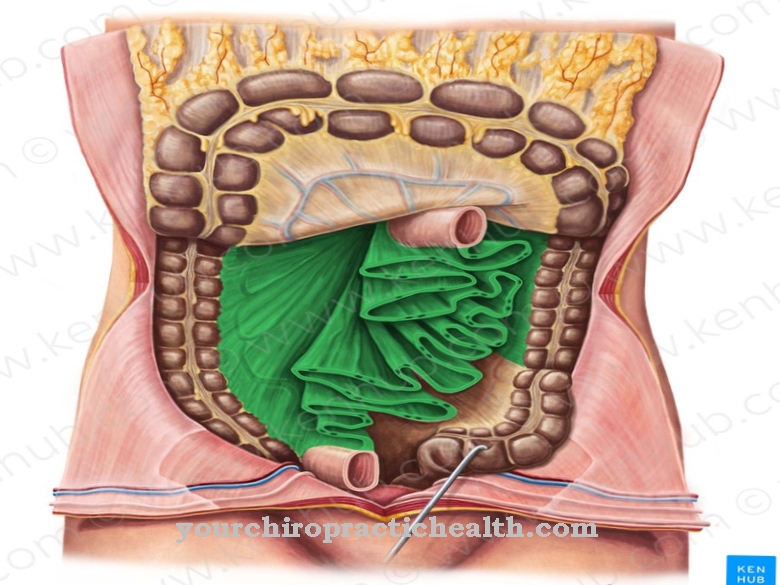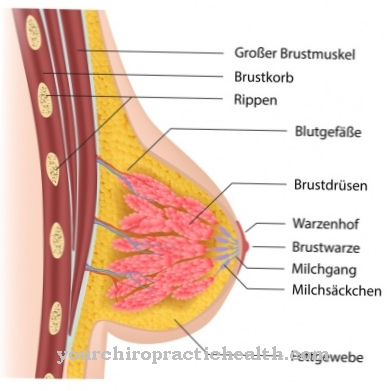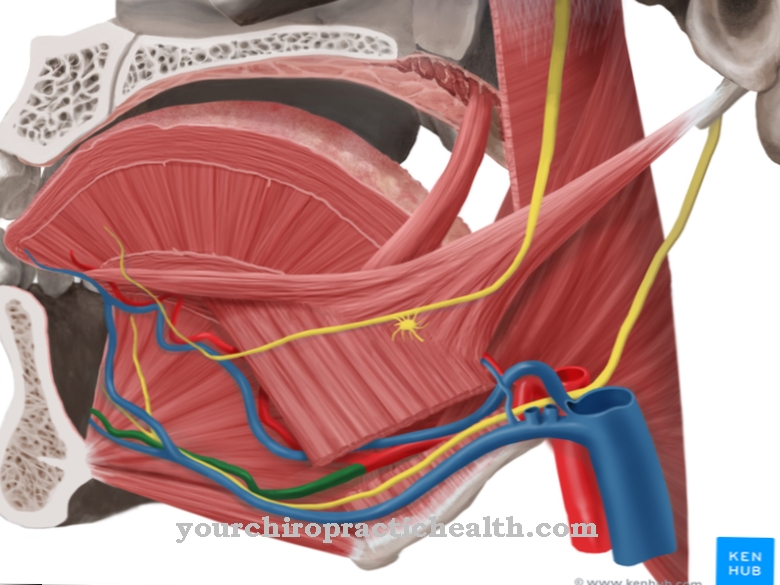At the Subarachnoid space it is a space between two meninges. The brain water circulates in it.
What is the subarachnoid space?
The subarachnoid space forms a split zone between the pia mater and the arachnoid mater, which are part of the meninges.
It is also known under the names Cavitas subarachnoidea, Cavum leptum meningicum, Spatium subarachnoideum or Cavum subarachnoideale. Because the cerebrospinal fluid (liquor cerebrospinalis) circulates in the subarachnoid space, it is also called the external liquor space. There is a connection between the outer CSF space and the inner CSF space, which is the ventricular system. One of the most common diseases of the subarachnoid space is subarachnoid hemorrhage.
Anatomy & structure
As already mentioned, the subarachnoid space is located between the pia mater and the arachnoid mater. The connection to the inner liquor space is established through the median aperture (foramen magendii) and the lateral aperture (foramen luschkae).
The internal liquor space is shaped by the cerebral ventricles. Its continuation occurs as a perivascular space (Virchow-Robin space) along the vessels moving inward.
In some places the subarachnoid space becomes particularly wide. These sections are called Liquorzisternen (Cisternae subarachnoideae). One of the most important cisterns is the cerebellomedular cistern, also known as the magna cistern. It is located on the side of the neck between the spinal cord (medulla spinalis) and the cerebellum (cerebellum). At this point, a medical puncture between the first cervical vertebra atlas and the occiput is possible through the gap in order to remove cerebrospinal fluid. However, it is only carried out in exceptional cases.
Another cistern is the Cisterna fossae lateralis cerebri. It is also called Cisterna valleculae lateralis cerebri and is located on the cerebrum. There it is located between the frontal lobes, parietal lobes and temporal lobes of the cerebral cortex (cortex cerebri). The cisterna chiasmatica also belongs to the cisterns, which is located on the lower side of the diencephalon in the region of the optic chiasm (junction of the optic nerves).
The interpeduncular cistern is located on the midbrain. More precisely, it is positioned in the cerebral crura (crura cerebri). Together with the cisterna chiasmatica, it bears the name Cisterna basialis. The quadrigeminal cistern is located on the midbrain on the lamina tecti. Together with the interpeduncular cistern, it encompasses the midbrain and is also known as the ambiens cistern.
Further cisterns of the subarachnoid space are the cisterna pericallosa between the bar surface (corpus callosum) and the lower section of the cerebral sickle, the cisterna pontocerebellaris inferior within the cerebellar bridge angle and the cisterna pontocerebellaris superior, which is located on the border to the cerebellum on the lateral section of the bridge (pons) .
Function & tasks
The subarachnoid space encloses the human spinal cord. It acts like a buffer between the bony spinal canal and the soft spinal cord. In addition, the brain water flows through it, which serves as protection for the spinal cord. The liquor envelops the brain like a pillow of water. The human brain also receives important nutrients from the liquor. It also removes metabolic end products from the tissue of the nerves.
The subarachnoid space is crossed by Trebekeln. These are covered by connective tissue cells. The cells have the properties of mononuclear phagocytes and can form macrophages. The macrophages can be detected within the framework of CSF punctures, which in turn enables diagnostic conclusions to be drawn.
The subarachnoid space disappears every now and then due to the agglomeration of piazelles and arachnoid cells above the convolutions. Conversely, however, its strong expansion can also occur.
Diseases
The most common disease of the subarachnoid space is subarchnoid hemorrhage (SAB). This means an arterial hemorrhage that leads into the subarachnoid space. Subarachnoid hemorrhage is a neurological emergency that occurs relatively often.
Women are particularly affected by the bleeding. In most cases, subarachnoid hemorrhage appears between the ages of 40 and 50 years. Out of 100,000 people, around 20 get such bleeding every year. Some of the patients die before treatment in the hospital. A third die in the clinic or suffer from permanent brain damage. Subarachnoid hemorrhage takes a positive course in only one third of patients.
In around 85 percent of all affected people, the subarachnoid hemorrhage is caused by a tear in an aneurysm in the brain. An aneurysm is a sac-like malformation in a vessel wall. Because this vessel wall has less stability in the area of the sac, there is an increased risk of a tear, which in turn leads to subarachnoid hemorrhage. The aneurysm can rupture even if there are no other symptoms or illnesses. Some people are physically active and lift heavy loads before the tear.
In some cases, an abrupt rise in blood pressure is responsible for the rupture of the aneurysm. Rather rare causes are injuries to the skull and brain area, poisoning, infections, blood clotting disorders, vascular inflammation or tumors. In some patients, no specific cause at all can be found.
There are several factors that increase the risk of bleeding in the subarachnoid space. These include the consumption of tobacco or cocaine, the excessive consumption of alcohol and high blood pressure. Subarachnoid hemorrhage is noticeable through severe headache. These spread from the forehead or neck towards the back. In addition, those affected often suffer from stiff neck, nausea, vomiting, sensitivity to light and impaired consciousness. Overall, the prognosis is considered unfavorable, as up to 40 percent of all patients die and around 25 percent have severe disabilities.

























.jpg)

.jpg)
